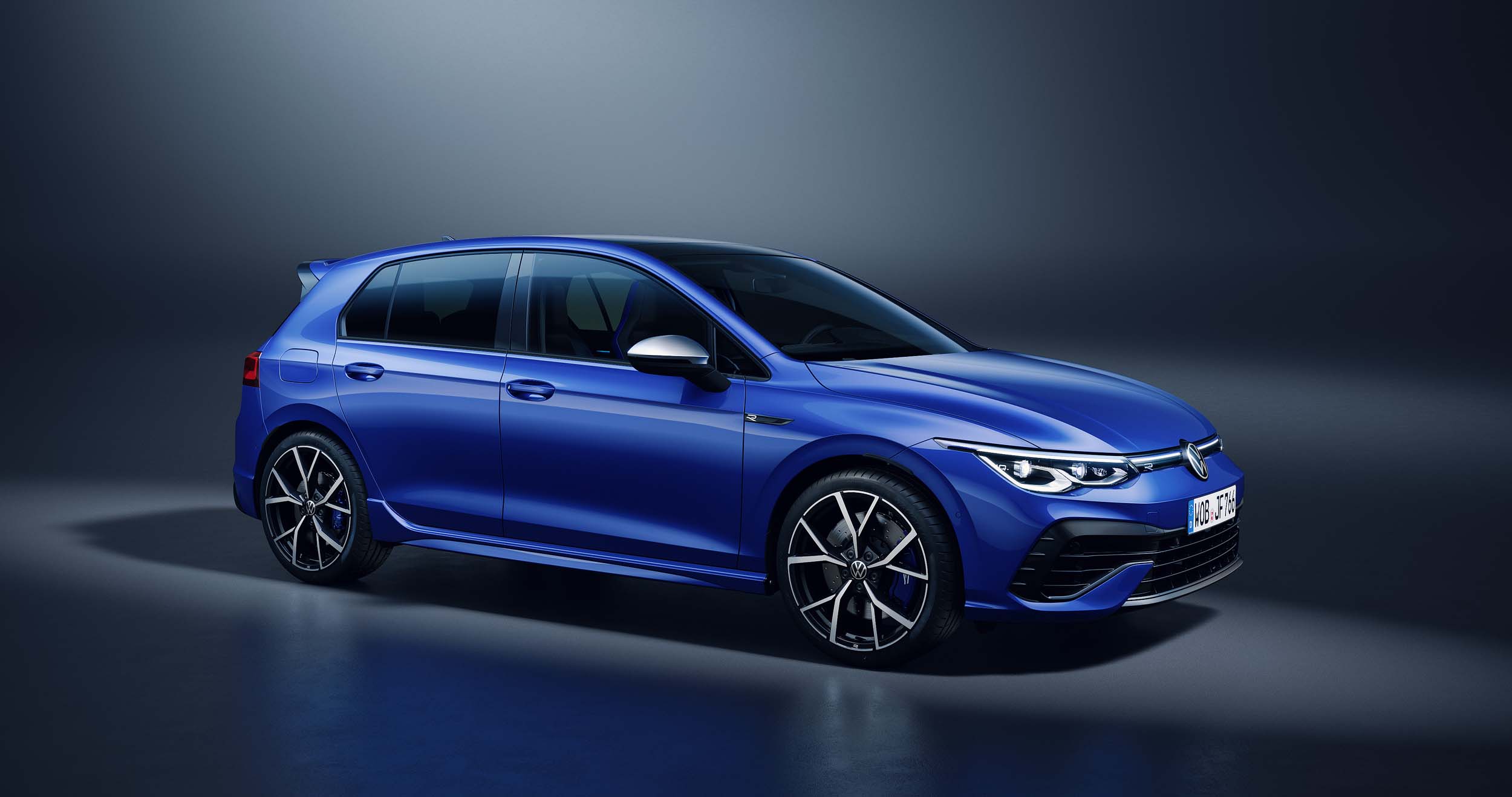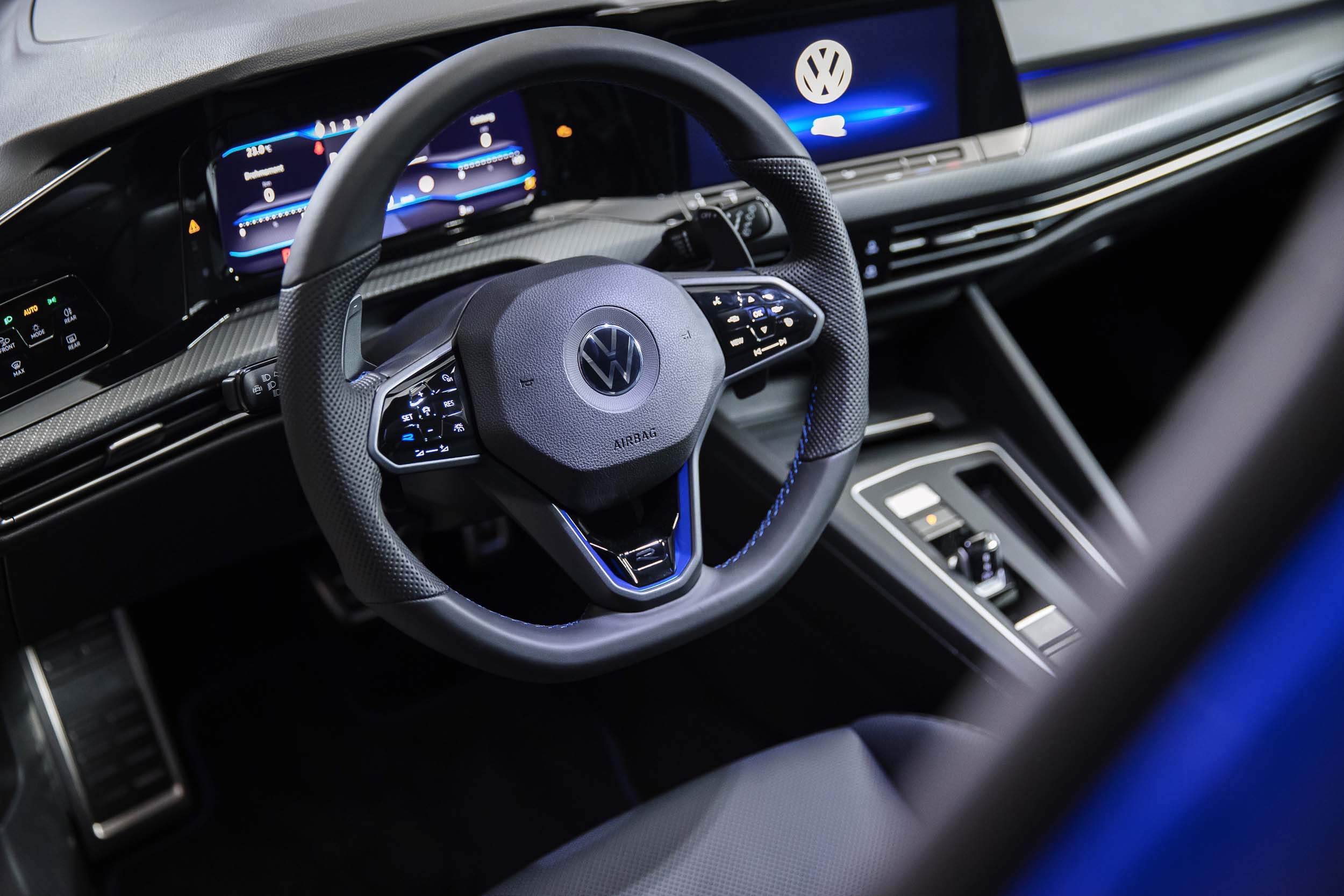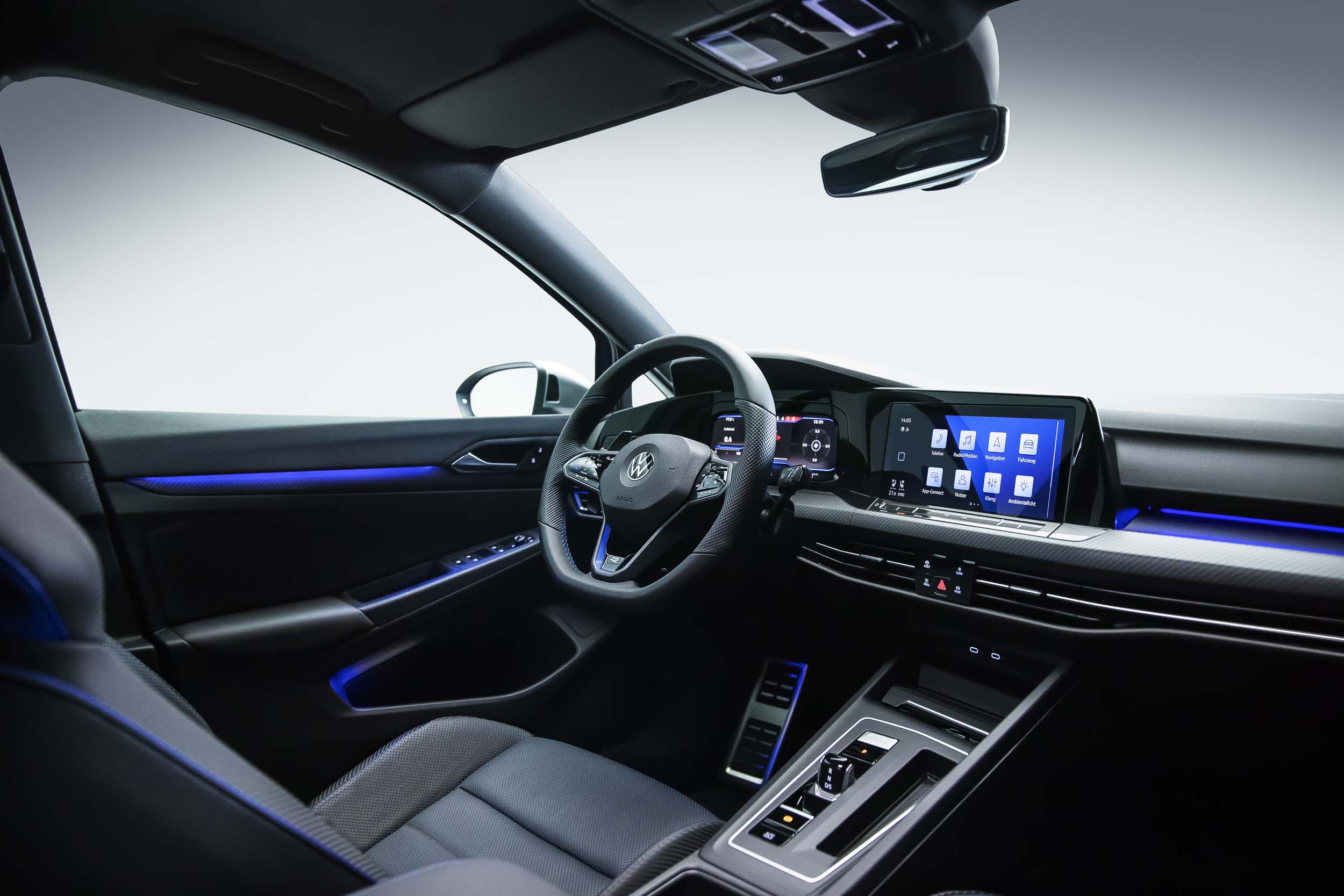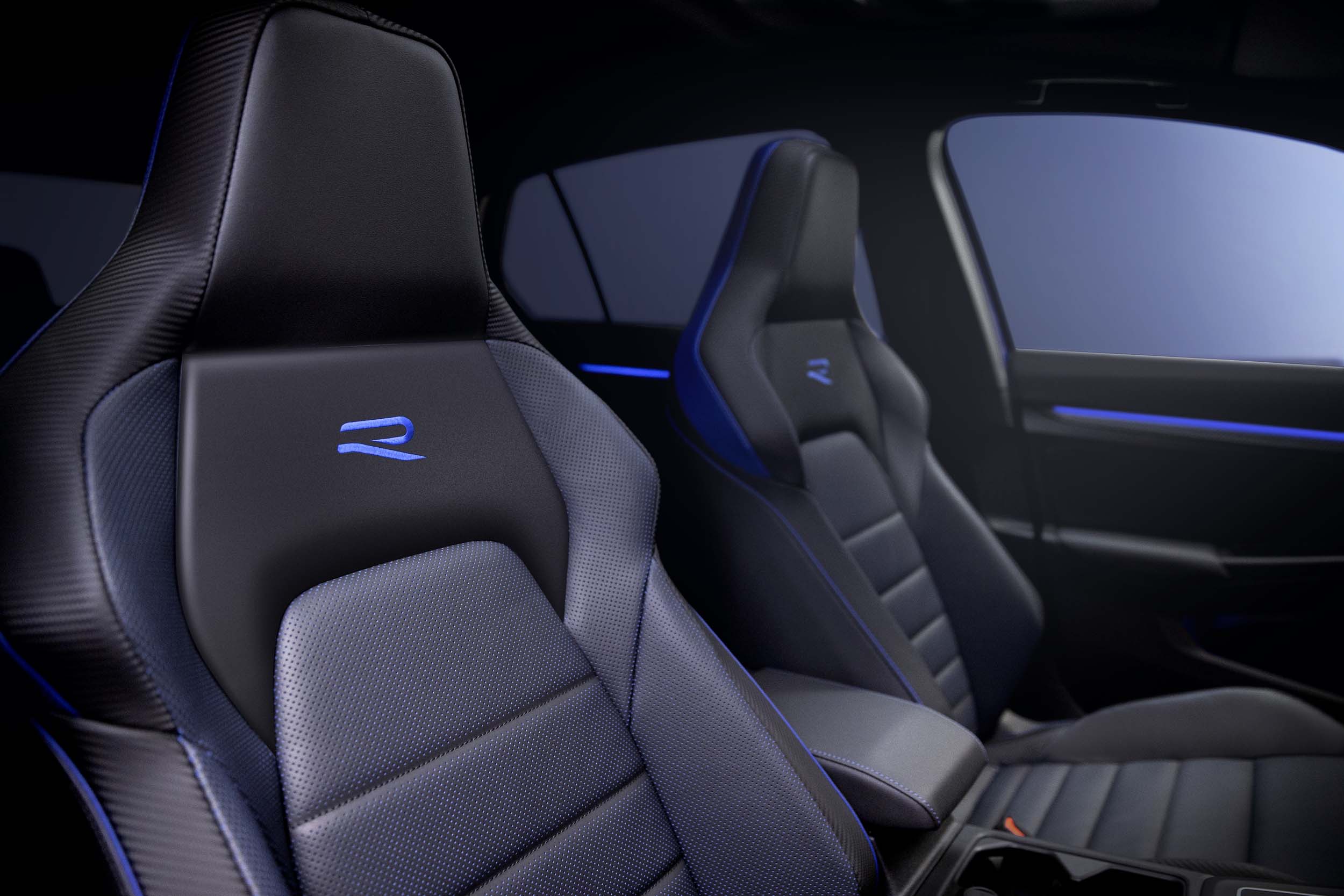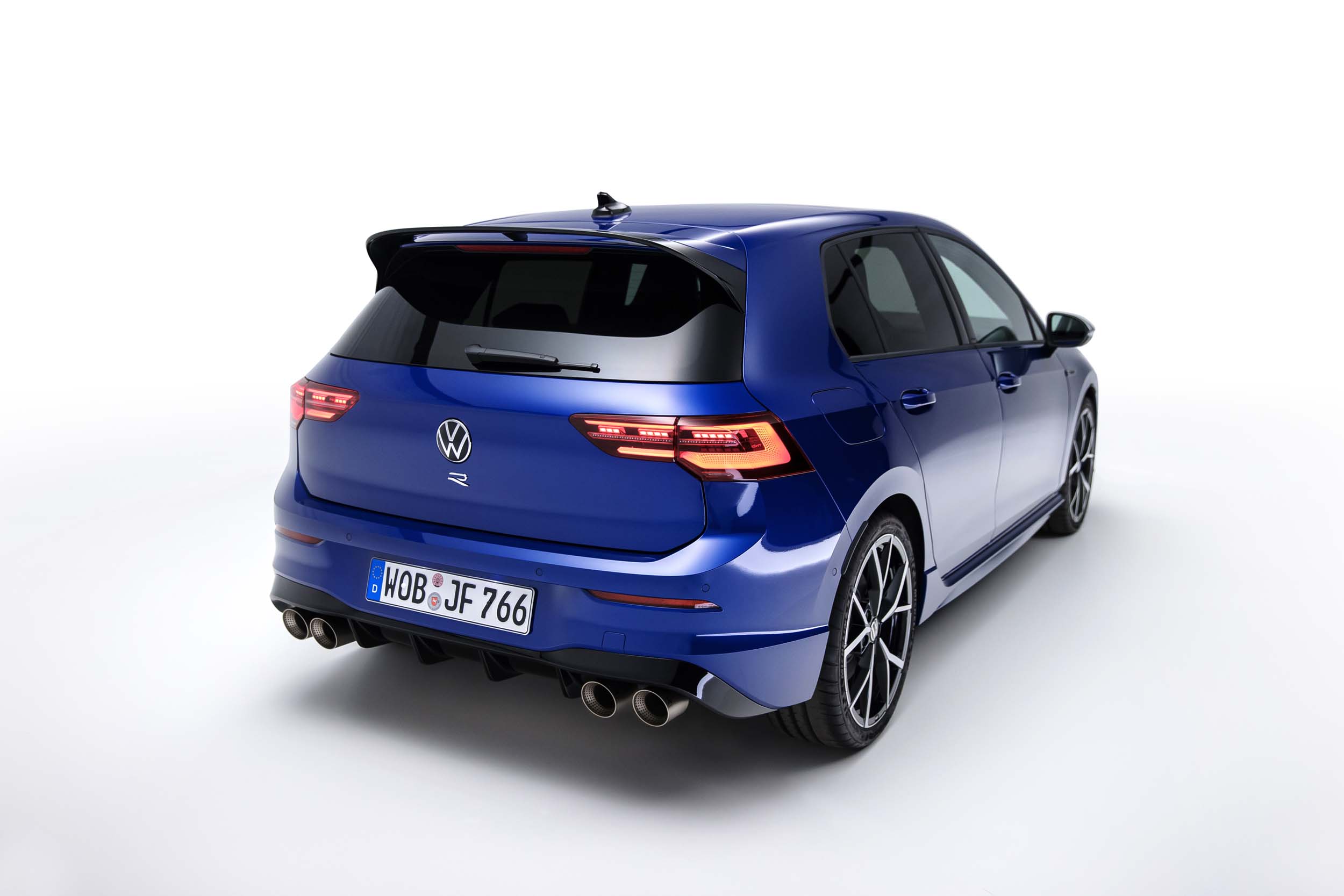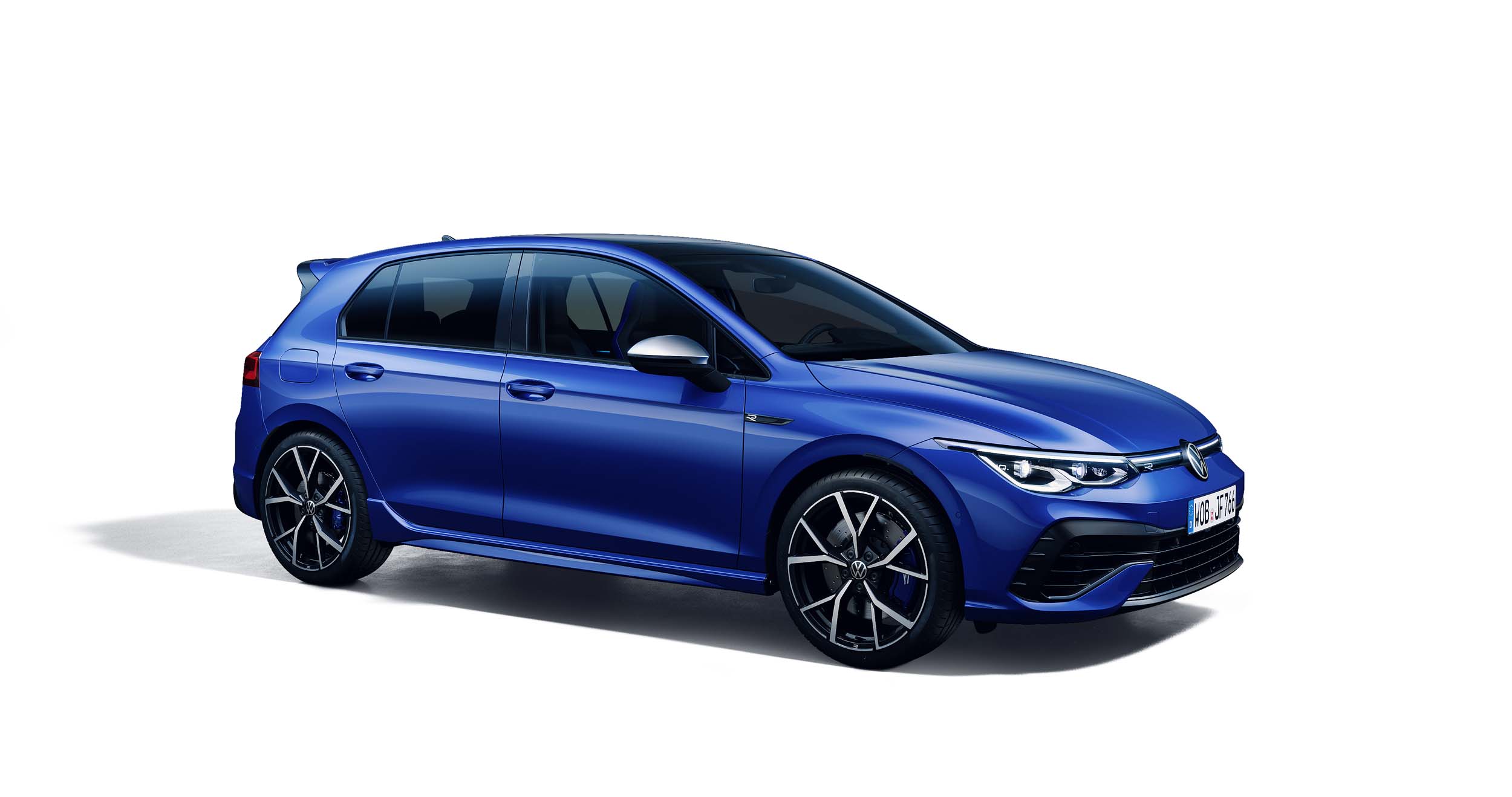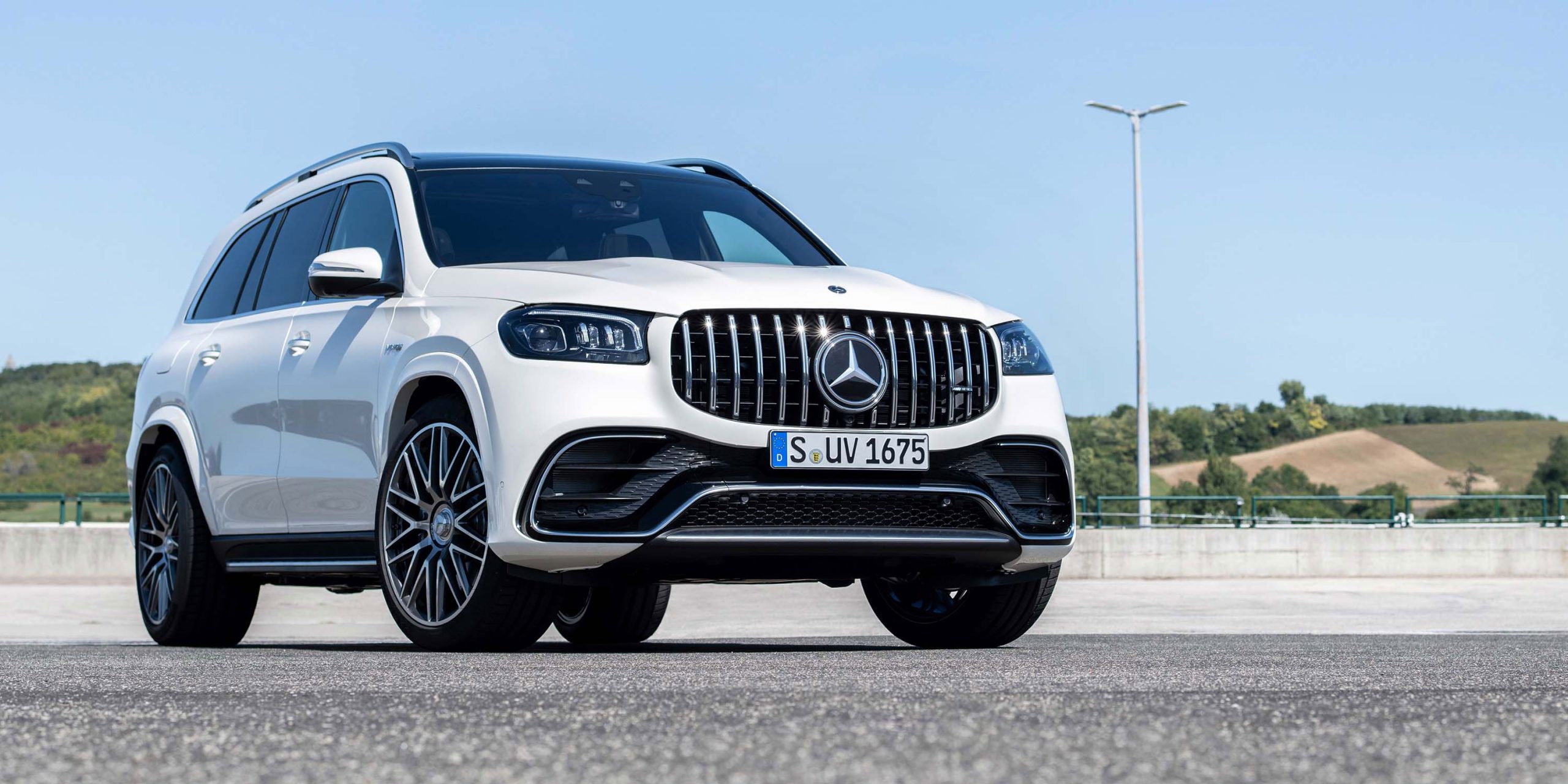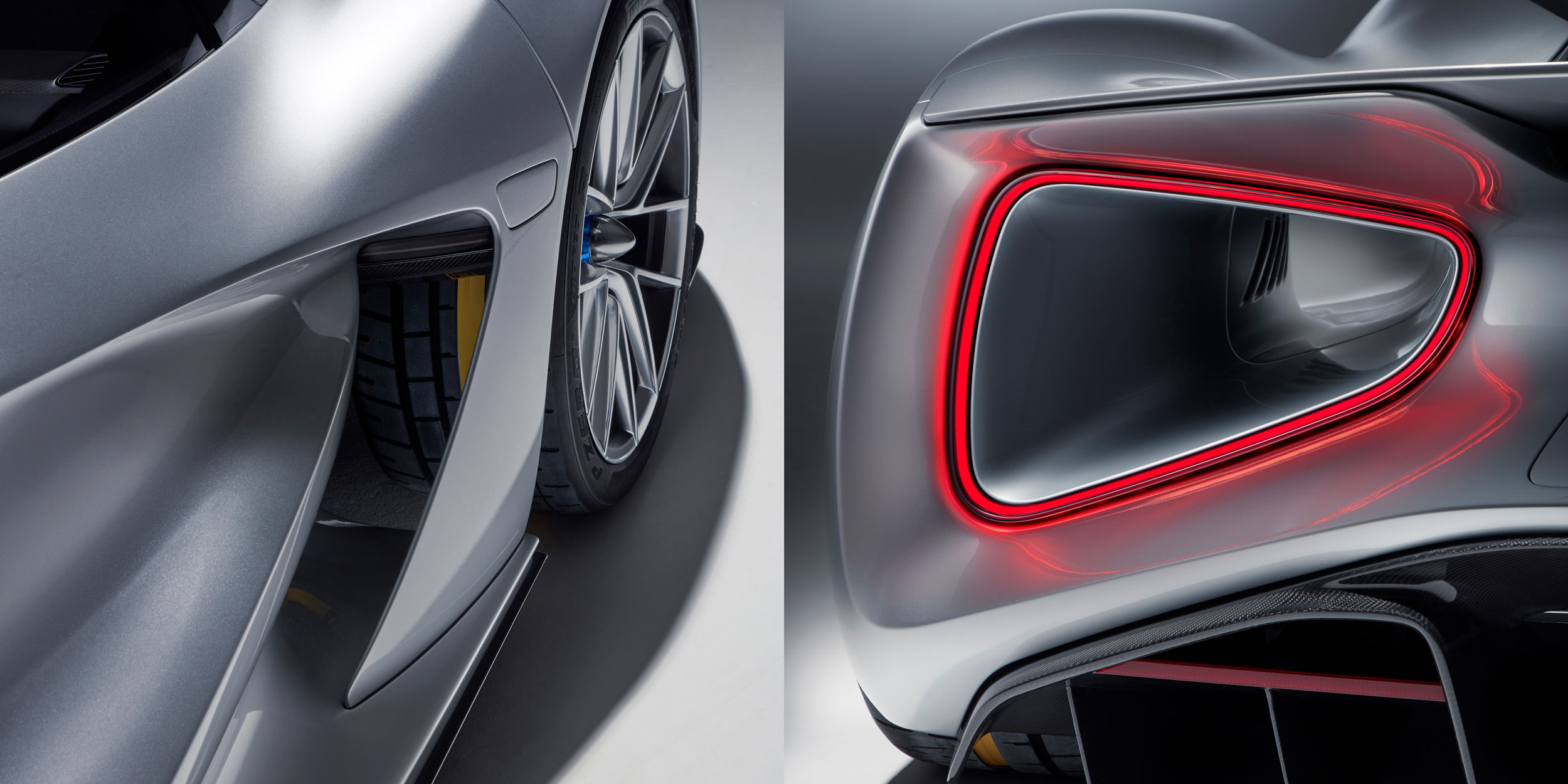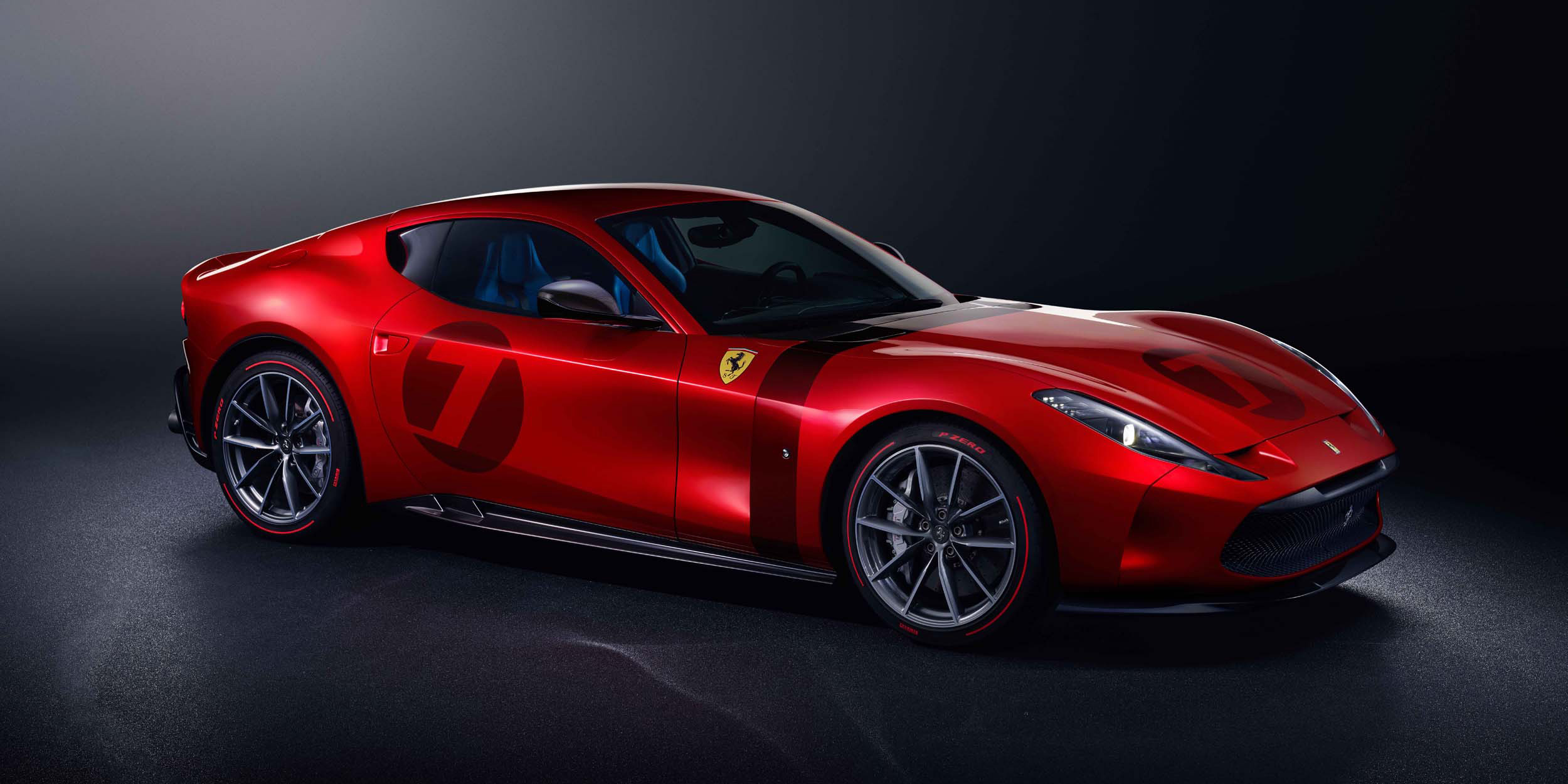Volkswagen Introduces The 2022 Golf R, The Most Powerful Production Golf Of All Time
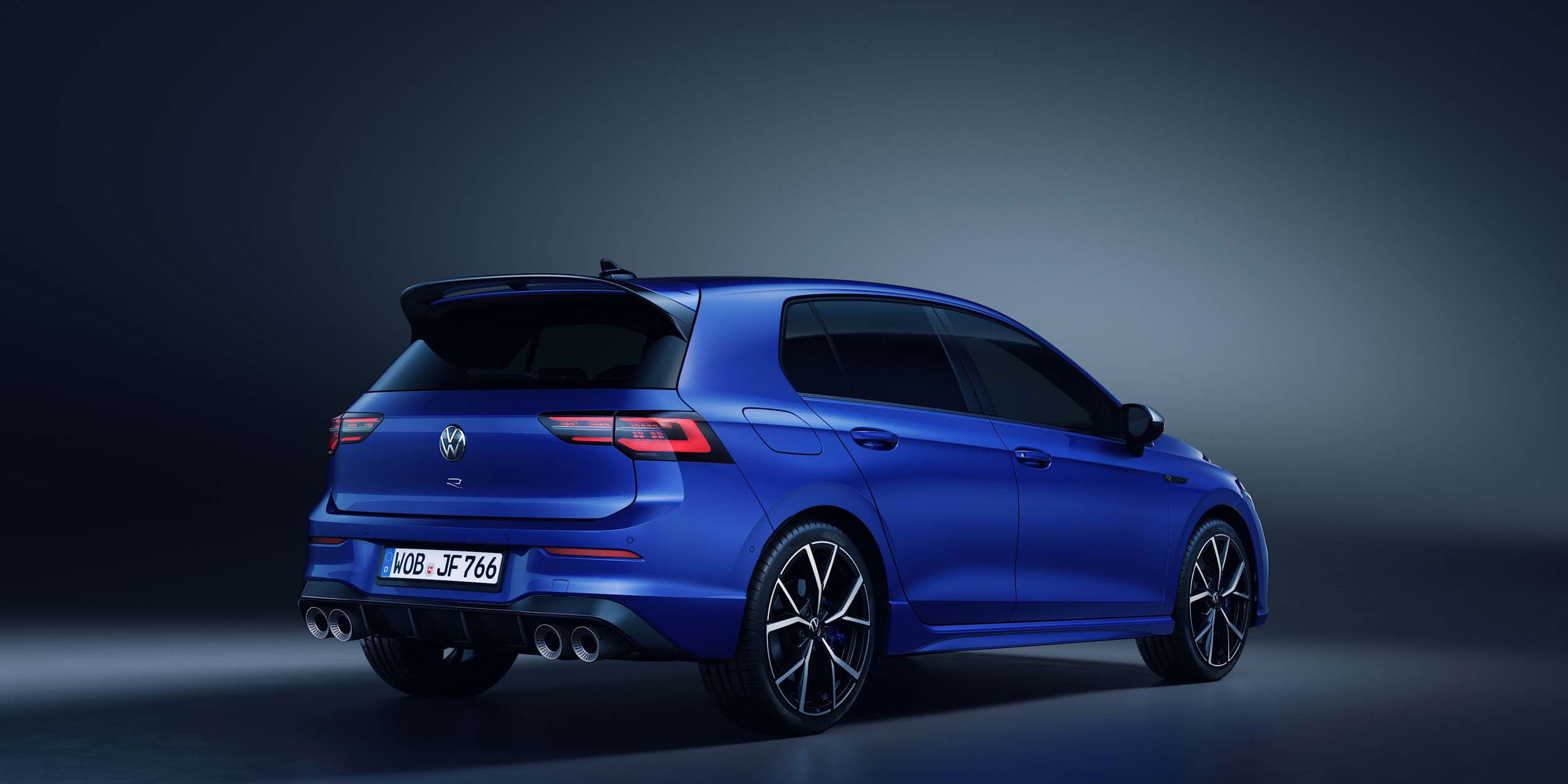
- Latest Golf R is the most powerful and fastest version of the brand’s performance halo
- 2.0-liter turbocharged engine now makes 315 horsepower, 27 more than previous generation
- Golf R now features torque vectoring 4Motion® all-wheel-drive system and larger brakes
Herndon, VA — Volkswagen unveiled the latest generation of the brand’s performance halo, the new Golf R, today. This car boasts 315 horsepower, 27 more than the outgoing U.S. model, as well as 310 pound-feet of torque. With standard 4Motion® all-wheel drive, the Golf R can sprint from 0 to 62 mph in just 4.7 seconds, on its way to a top track speed of 155 mph. The car will go on sale in the U.S. as a 2022 model during the latter part of 2021.
Other standout features of the new Golf R include a newly developed torque vectoring 4Motion all-wheel-drive system and a Vehicle Dynamics Manager. The new 4Motion setup features selective wheel torque control on the rear axle—the new rear differential distributes the power between the front and rear axles, and also between the two rear wheels. This makes it possible to significantly increase the agility of the Golf R, particularly when cornering. As a world first, the all-wheel drive is also networked via a Vehicle Dynamics Manager (VDM) with other running gear systems such the electronic differential locks (XDS®) and the DCC® adaptive damping system. Thanks to this close integration of the different systems, the new Golf R offers optimal traction, neutral handling with the utmost level of precision, and maximum agility and driving pleasure.
EXTERIOR
All five generations of the Golf R feature permanent all-wheel drive, customized design and exclusive and sporty equipment. The exterior design of the new Golf R includes a new front bumper featuring a motorsport-style splitter and R-specific air intake grilles, with high-gloss black elements. At the top of the radiator grille, the Golf features a blue crossbar which lights up as an LED strip as soon as the engine starts and stretches all the way into the fenders to act as the daytime running lights.
Like all eighth-generation Golf vehicles, the R is a five-door model. And in the US, a sunroof is now standard for the Golf R. The distinctive features of the R-model’s side design include 19-inch aluminum-alloy wheels paired with summer performance tires, exclusive side skirts, matte chrome exterior mirror caps that project the R logo onto the road when the doors are opened and closed, and a 0.8-inch lower stance than the standard production model. Blue brake calipers, adorned with an R logo on the front, peek through the 19-inch wheels.
Another unique design element for the Golf R is the rear bumper, which now incorporates a newly designed high-gloss black diffuser. It is framed at the sides by elegant, chrome-plated twin tailpipes for the standard sport exhaust system. A roof spoiler ensures the necessary level of downforce for the rear axle.
The new Golf R can be configured in three different colors. Lapiz Blue Metallic is the signature color for the R, but it will also be available in Pure White or Deep Black Pearl Effect.
INTERIOR
The Golf Mk 8 digitalized many of the displays and controls in this globally best-selling product line. This has enabled the graphics to be tailored to the new Golf R in the standard Discover Pro infotainment system and the Digital Cockpit configurable instrument panel. The 10-inch Discover Pro touchscreen display greets the driver with a new R welcome screen as soon as the vehicle is opened with the vehicle key.
The interior equipment in the Golf R has also been customized and enhanced. The driver and front passenger sit on top-of-the-range sport seats, with Nappa leather seating surfaces that feature carbon-look elements with blue accents in the side sections, as well as a blue R logo in the backrest. The heated and multifunction leather sport steering wheel has also been given a specific design, with ergonomically shaped DSG paddles, blue contrast stitching, and an R button for direct selection of the various driving profiles. A more forceful press of the R button also activates Race profile directly. Like other eighth-generation Golf models, the Golf R features “touch” controls on the steering wheel with haptic feedback to the driver.
Other standard equipment includes: carbon look dash panel décor; R-specific door trim; brushed stainless-steel pedal caps and driver footrest; and 30-color ambient lighting for the dash panel and doors that is synchronized with the display.
POWERTRAIN AND CHASSIS
The 1,984 cc four-cylinder turbocharged TSI® engine in the new Golf R is currently the most powerful EA888 powerplant. This enhanced fourth-generation design (evo4) delivers 315 horsepower, 27 more than the engine in the last U.S. Golf R. Maximum torque has risen from 280 to 310 pound-feet, available from just 2,100 rpm and remaining constant at this high level up to speeds of 5,350 rpm. Thanks to a fully-electronic coolant regulator unit, the engine also features very efficient thermal management with a short warm-up phase. The resultant reduction in friction losses helps to reduce fuel consumption.
The engine also features variable valve timing on both the intake and exhaust cams, with variable valve lift on the exhaust side. This solution permits optimum control of gas exchange with respect to performance, consumption and exhaust emissions. The engine transfers its power to the standard 6-speed manual transmission—a key feature for the U.S. and Canadian markets—or an optional 7-speed DSG dual-clutch automatic transmission.
The Golf R comes equipped with a new performance-oriented all-wheel-drive system, exclusive in North American Volkswagen models to the new Golf R. A newly developed rear differential distributes the power variably between the front and rear axles—and, now, between the left and right rear wheels. The differential from the 4Motion drive system normally transfers the power in a 50:50 ratio via a multi-plate clutch to the left and the right-hand rear wheels, even when the differential lets them rotate at different speeds when cornering. The new 4Motion all-wheel drive system with torque vectoring, however, can also distribute the torque variably between both rear wheels, with up to 100 percent able to be directed to the wheel on the outside of the bend. This reduces the cornering radius and helps to eliminate understeer. This leads to noticeably more agile handling than its predecessor.
Improved agility is perfectly complemented by the standard variable-ratio steering in the new Golf R. The intensity of the power distribution is determined by the current steering angle, accelerator pedal position, lateral acceleration, yaw rate and speed. The driver can also influence the way in which the all-wheel drive system and the stability systems interact via the standard driving profile selection (Comfort, Sport, Race and Individual). The R button on the steering wheel takes the Golf R driver straight to the driving profile selection.
The suspension has been retuned specifically for the vehicle, starting with an 0.8-inch lower ride height than the standard Golf. The focus was on achieving outstanding performance while still retaining the best possible ride characteristics. The car features a strut-type front and a multi-link rear suspension. Compared with its predecessor, the spring rates and anti-roll bar rates have both been increased by 10 percent. The DCC application was also adapted accordingly. The engineers increased the negative camber (-1°20’) on the front axle to allow higher cornering speeds and also improve stability. A new aluminum subframe helped to reduce the weight of the front suspension by 6.6 pounds. The transverse link mounts and hub carriers on the rear suspension of the Golf R have also been modified.
Volkswagen has introduced a new driving dynamics control system for the Golf Mk 8: the Vehicle Dynamics Manager. In the Golf R, the intelligent system not only closely integrates the electronic differential locks (XDS) and cornering performance of the DCC system, but also—for the first time—the 4Motion all-wheel drive system during every driving maneuver. In this process, adapting the individual wheel damping (200 times a second) can help with particularly agile and accurate handling.
The Vehicle Dynamics Manager also enables exact calculation of optimal clutch control for the selective wheel torque control function to further optimize the agility and stability of the Golf R. In parallel to this, targeted braking intervention on the vehicle side on the inside of a bend further reduces understeer in the transition and limit ranges. Traction is improved by increased locking in the selective wheel torque control, and vehicle handling is slightly more biased towards the rear.
The program can also help optimize yaw and load change damping at high speeds. Since the Vehicle Dynamics Manager now monitors the car’s handling on every corner, it is able to specifically correct any understeer or oversteer. For example: If early application of the throttle in a corner causes the Golf R to understeer too heavily in a corner, the Vehicle Dynamics Manager closes the selective wheel torque control clutch on the wheel located on the outside of the bend. The result: a yaw moment is generated on the rear axle, which turns the Golf R neutrally into the bend and reduces the understeer.
The new Golf R underwent its final tuning on the legendary Nürburgring Nordschleife race track, and includes new “Special” and “Drift” driving profiles in addition to the traditional Comfort, Sport, Race and Individual profiles in Driving Mode Selection. The Sport profile is the dynamic and ideal basic mode for the Golf R. The Comfort profile is tailored more for a high level of comfort, while still offering a high degree of steering precision. In the Race profile, the coasting function (freewheeling without drive power) is deactivated, the engine sound is increased, and the DSG, DCC, steering and the all-wheel-drive system are adjusted to a sportier setup.
In the Special driving profile, all of the main drive system parameters were configured for the Nordschleife—including the new 4Motion all-wheel drive system. The result is that the DSG® dual-clutch automatic version of the Golf R is up to 17 seconds quicker in internal tests on the Nürburgring Nordschleife than its predecessor. Compared to Race mode, the Special profile has softer damping settings, to make sure the Golf R can maintain maximum contact with the road on the undulating Nordschleife. The lateral behavior and all-wheel-drive controls are optimized to handle the corners of the Nürburgring. Furthermore, downshifts in automatic DSG mode, depending on the brake pressure, complement the braking ahead of corners.
In Drift profile (meant for track use only), the parameters for the ESC stability control (change to ESC Sport) and the distribution of power via the all-wheel drive system enable the Golf R to drift. To help ensure that the profile is only selected on private roads, the infotainment system always displays a confirmation prompt before it is activated.
In the Individual profile, the driver can precisely adjust and save their own driving profile using a digital slider. In profiles below Comfort, this results in even greater comfort. In profiles above Race, the tuning becomes even more dynamic and very direct; minimum roll is then combined with maximum agility. Using the ESC button, the driver is also able to deactivate ESC separately while on the race track.
When the Golf R is started, ESC is always active as a full system. However, drivers of the most powerful Golf can adapt ESC in two stages. In ESC Sport mode, the ESC and traction control (ASR) slip thresholds are increased to reduce the intensity of interventions. In ESC Off mode, experienced drivers can additionally deactivate ESC altogether for all driving situations. However, Front Assist reactivates the full ESC system in emergencies.
To make sure this Golf can be braked confidently from top track speed, the R has been equipped with an improved braking system. In the past, the R had front discs that were 13.4 inches in diameter and 1.2 inches wide: now they are 14.1 inches by 1.3 inches wide. The front calipers have two pistons, made of aluminum that reduce mass by 60 percent per side. A larger brake master cylinder ensures crisp, precise response in combination with sporty and short brake pedal travel.
